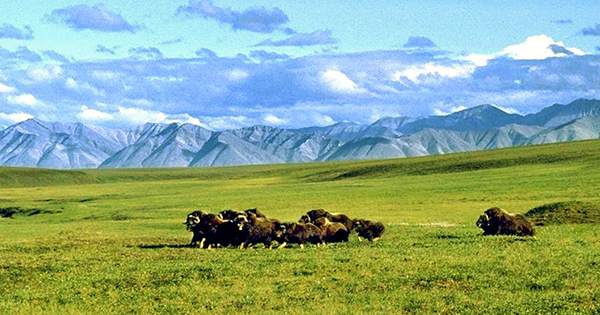After decades of pushbacks and protests, the Trump administration has begun auctioning off deep oil drilling leases in the Alaska desert. However, the sale has not been planned yet. The auction of oil and gas drilling in the coastal plains of the Alaska Arctic National Wildlife Refuge, the wildest site in the United States, kicked off on Wednesday, January; a federal judge ruled on Tuesday that the sale could go ahead.
Despite some expectations, the auction was a flop. Fossil fuel giants and large energy companies were almost entirely interested and did not bid, according to a Reuters report, leaving the state-owned Alaska Industrial Development and Export Authority as the sole bidder for most leases.
The rest of the lease does not attract bids or is whipped into smaller power firms. Most of the arguments for allowing the oil and gas industry in the region were that it would bring billions of dollars into the region – the country’s largest national wildlife sanctuary – but lease sales in January were only 14.4 million.
Adam Kolton, executive director of the Alaska Wilderness League which has been against the sale, said in a statement, “This lease sale was an epic failure for the Trump administration and the Alaska congressional delegation. After years of promising revenue and job bonuses, they threw out a party for themselves, with the state among the only bidders.” “We have known for a long time that the American people do not want drilling in the Arctic, the Gwich’in people do not want it, and now we know that the oil industry does not want it either.”
The Arctic National Wildlife Refuge War has been identified by some as the longest and largest environmental fight in recent U.S. history. The Arctic National Wildlife Refuge includes 78,000 square kilometers (30,100 square miles) of tundra and wetlands roaming the Alaska North Slope region, one of the most incredible patterns of American biodiversity, including polar bears, grizzly bears,
black bears, leopards, males, Tubes, Martens and Beavers. Much of the drilling controversy in the region focuses specifically on the coastal plains of refugees known as the “1002 region,” which includes the main calving ground of the Porcupine group, America’s largest caribou group. Environmentalists and some indigenous groups have been working to preserve the region’s wildlife and heritage since talks began in the late 1970s to open “1002 zones” for fossil fuel exploration and industrial development.
While this week’s auction flop hints at good news for the region’s conservation, defenders on behalf of wildlife shelters say the battle is far more than a victory. In a last-ditch effort to curb the damage, some are pushing for a halt to the leasing of President-elect Joe Biden and for the suspension of all activities related to the Arctic National Wildlife Refuge Oil shortly after its inauguration on January 20.
“Today’s coastal lease sales are a continuation of the administration’s disregard for human rights, climate science and public processes,” a large coalition of environmental groups and indigenous organizations, including the World Wildlife Fund and the Center for Biodiversity, said in a joint statement [PDF]. “This is a flawed process from the beginning that has changed or ignored scientific data on the effects of drilling on land and crippled wildlife, and all of Alaska and Canada’s indigenous Gwich’in who are strongly involved have failed to consult adequately with the Alaska Native community.” Gwich’in and the Iñupiat people have been overseeing the Alaska Arctic for millennia – and disregarding the legacy of this stewardship by selling off the coastal plains for corporate gain. “















